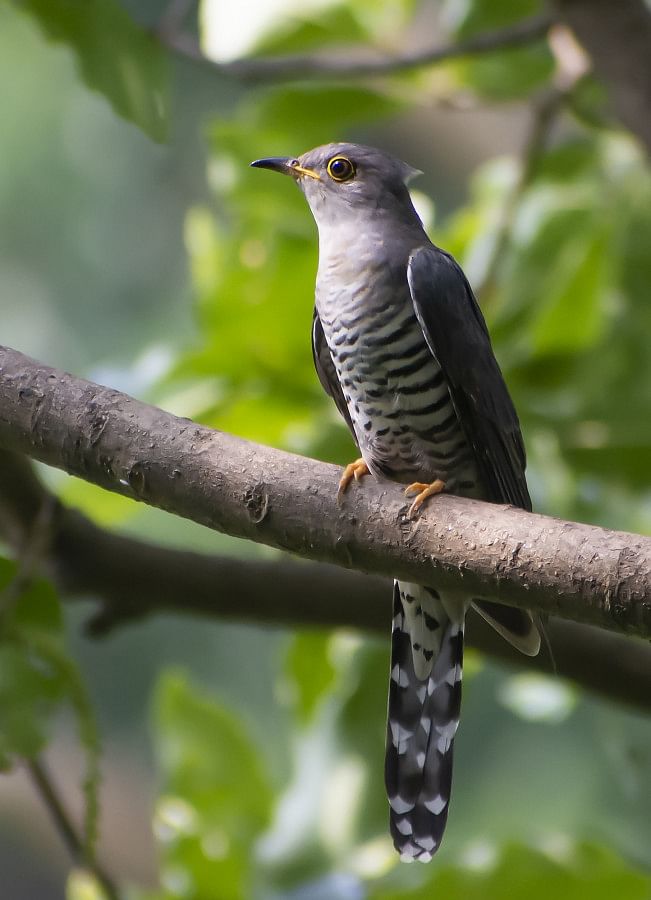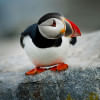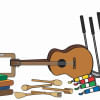The National Botanical Garden in Mirpur is not only a place of beauty and serenity but also an important habitat for a diverse range of bird species. By hosting a diverse number of plants, botanical gardens create microhabitats that support the avian population and for bird enthusiasts and photographers, this place can be a treasure trove.
Apu Jaman, a Digital Creative Administrator at Eagles Entertainment Pvt Ltd. and an avid bird photographer has been capturing the images of birds for more than a decade. Jaman shares his extensive observations of the birds commonly sighted in the garden, showcasing its role as a hub for both resident and migratory birds.

"The very common birds in the National Botanical Garden are Oriental magpie-robin, crow, house sparrow, rufous woodpecker, etc.," Jaman notes, listing numerous species that highlight the biodiversity within the garden's confines. He also mentions encountering rarer species, underscoring the garden's importance as a sanctuary.
Of course, urbanisation poses significant threats to wildlife, fragmenting habitats and displacing species. However, botanical gardens can offer a retreat for the birds by mimicking natural ecosystems within city limits.

Over the years, Jaman has observed not just the seasonal shifts in bird populations but also a concerning trend of decline. "As per my observation, the bird population changes every year not only with the season. The population of the variety of birds and other wildlife in the garden is reducing every year," he remarks, attributing this decline to habitat disruption and environmental changes within the garden.
The impact of human activity, including construction and noise pollution from visitors, poses significant challenges to the well-being of the garden's avian inhabitants.
Jaman's concerns extend to the well-being of specific bird species and their habitats. He observes, "After the COVID-19 pandemic, it's hard to find raptor birds here. Due to the beautification and construction of the garden, there are fewer host plants for birds and other species." He suggests that the Forest Department should prioritise the garden's ecological health to ensure the future of its bird populations.
Jaman also points out the challenges faced by photographers and conservationists, including restrictions on access and the impact of maintenance practices on wildlife.
"The biggest challenges of photography are environment and time. For the beautification of the botanical garden, various shrubs are often cut down without knowing if there is a Dahuk bird's nest," he explains, highlighting the need for a more thoughtful approach to garden maintenance and support for biodiversity-focused photography.
According to Jaman, if you are a beginner and planning to take photos of birds, first and foremost, you have to be very patient. "To know about a particular bird, one should know about that bird's food habits and movement," he points out, underlining the necessity of approaching bird watching and photography not just as a pastime but as a practice of learning and observation.
Understanding a bird's behaviour and environment is important to truly appreciate its presence and capture its movement through the lens. Moreover, Jaman advocates for a respectful and measured approach to photography, advising, "You can't get into the habit of snapping photos just after seeing a bird. Give the bird time to understand you, and the bird will give you time to photograph."
This philosophy reflects an ethos of bird watching and photography — one that values the connection between observer and subject, emphasising that a successful photograph stems from mutual respect and patience.
While enjoying the beauty and diversity of bird life in the National Botanical Gardens, it's also important for us to consider what can be done to support bird conservation. Gardens themselves play a critical role in conserving biodiversity, offering safe havens for many species.
We need to advocate for the protection of natural habitats and support policies that benefit bird conservation. So, as we immerse ourselves in bird photography, let's remember our role in conserving these beautiful creatures and their habitats.
Photo Courtesy: Apu Jaman








Comments